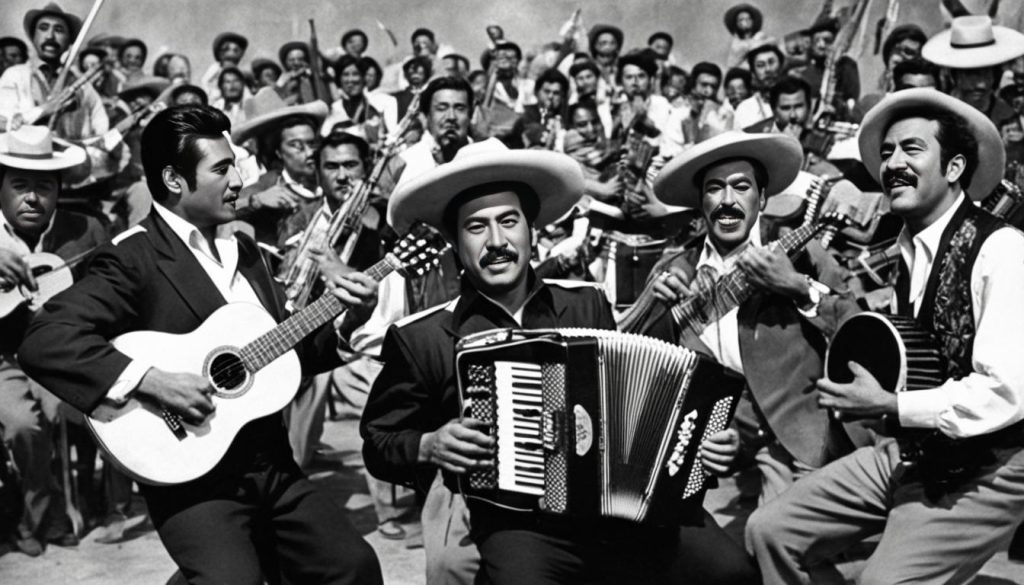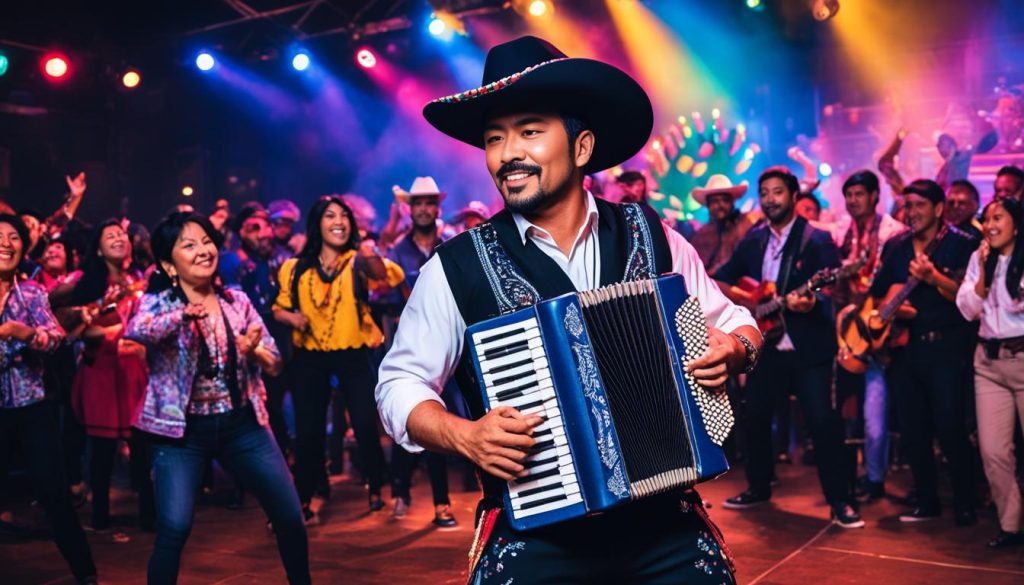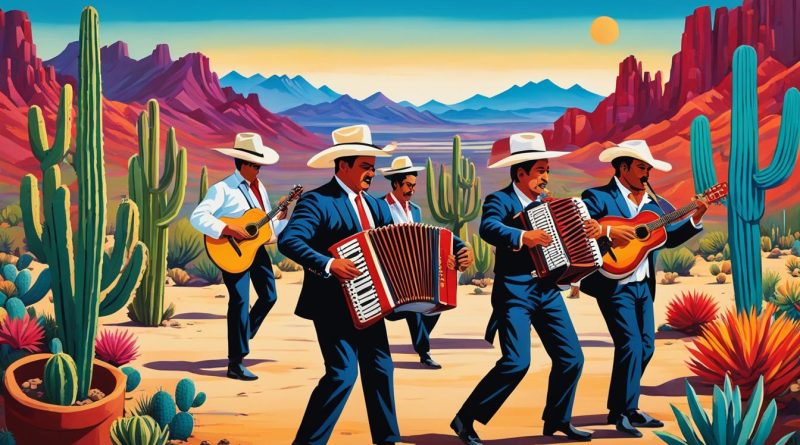Exploring the Roots of Tejano Music Heritage
Tejano music is a proud representation of the Texan-Mexican identity, blending together the rich musical traditions of both cultures. Its vibrant rhythms and lively melodies have captured the hearts of music lovers worldwide, and its cultural significance cannot be overstated. In this section, we will delve into the roots of tejano music heritage, tracing its origins and examining its evolution over time.
Key Takeaways
- Tejano music has a rich and diverse heritage.
- It blends Mexican folk music with various musical influences from the United States.
- It serves as a form of cultural expression and a means of preserving traditions.
- Tejano music has enduring legacy in Texas and beyond.
- Understanding the roots and cultural context of tejano music deepens appreciation for this dynamic genre.
The Origins of Tejano Music
Tejano music has a rich and diverse history that reflects the fusion of Mexican heritage and American musical influences. The unique sound of this genre can be traced back to the late 19th century, when Mexican-Americans in Texas began to incorporate elements of German, Czech, and Polish polka music into their traditional folk tunes. This blending of cultural traditions gave rise to a vibrant new sound that became known as tejano music.
The roots of tejano music can be traced even further back to the influence of African rhythms and musical traditions brought to the region through the slave trade. These rhythms were eventually blended with the polka-infused sounds of Mexican music, creating a distinctive sound that is still heard in tejano music today.
The historical and cultural context that gave rise to tejano music was one of social and political upheaval in Texas. The Mexican-American community faced discrimination and marginalization, but music provided a means of cultural expression and resistance against these injustices. The genre quickly became popular among the working-class communities in Texas and beyond, with tejano bands often playing at weddings, quinceañeras, and other celebratory events.
The Key Figures of Tejano Music
There are many influential figures in the history of tejano music who contributed to its development and evolution. One such figure is Narciso Martinez, who is often credited with pioneering the conjunto style of tejano music. Another major figure in the genre was Selena Quintanilla, whose crossover success helped popularize tejano music to a wider audience in the United States and beyond.

“Tejano music is a reflection of the cultural and historical diversity of Texas, and its origins speak to the resilience of Mexican-American communities in the face of discrimination and marginalization.”
Tejano music has continued to evolve and flourish over the years, incorporating influences from rock, jazz, and other genres. Its cultural significance and enduring legacy make it a vital part of Texas’ musical heritage.
The Cultural Significance of Tejano Music
Tejano music holds a unique place in the cultural landscape of Texas and beyond, reflecting the Texan-Mexican identity in a way that no other genre can. With its roots in the blending of Mexican folk music and various regional musical influences, tejano music has come to represent the cultural and artistic fusion that defines the state of Texas.
Tejano music has been a vital means of cultural expression for generations of Mexican-Americans in Texas, providing a means for artists to represent their heritage and connect with their community. By incorporating traditional Mexican instruments and song structures into their music, tejano artists have been able to preserve the cultural traditions of their ancestors while creating something new and dynamic.
Over the years, tejano music has also served as a platform for social commentary, with artists tackling issues such as immigration, poverty, and discrimination in their lyrics. This aspect of the genre has made it an important tool for social justice and activism in the Texan-Mexican community.
Tejano music has not only had an impact on the cultural identity of Texas, but on the wider music scene in the United States and beyond. With its infectious rhythms and lively performances, tejano music has reached audiences far beyond its home state, inspiring new generations of artists and introducing new audiences to the rich cultural heritage of Texas.

The Evolution of Tejano Music
Tejano music has undergone significant changes over the years, with new artists adding their own unique style and sound to the genre. The 1970s saw a spate of new bands and artists emerge, including Selena Quintanilla, who would go on to become one of the most iconic tejano singers of all time. In the 1980s and 1990s, tejano music experienced a surge in popularity, with crossovers into the mainstream music scene and the rise of new sub-genres such as tejano cumbia.
Today, tejano music continues to evolve and adapt to new musical influences, while the roots of the genre remain firmly planted in the cultural heritage and traditions of Texas.
The Influential Figures of Tejano Music
Tejano music has been shaped by numerous influential figures throughout its history. Their contributions have not only helped to define the genre but have also had a lasting impact on the wider music scene in Texas and beyond.
Lydia Mendoza
Lydia Mendoza was a prominent Mexican-American singer and guitarist who is often referred to as “La Alondra de la Frontera” or “The Lark of the Border.” Her distinctive voice and skilled guitar playing helped to popularize traditional Mexican music in the United States in the early 20th century. Mendoza’s 1934 recording of “Mal Hombre” became a hit across the country and cemented her status as an influential figure in the tejano music world.
Freddy Fender
Frederick “Freddy” Fender was a tejano musician and singer-songwriter who achieved crossover success in both the English and Spanish-speaking music markets. Fender’s hits include “Before the Next Teardrop Falls” and “Wasted Days and Wasted Nights.” He was an important figure in the development of the “Tex-Mex” sound, which blended elements of tejano, country, and rock music.
Selena
Selena Quintanilla-Pérez was a tejano singer and the “Queen of Tejano Music.” Her unique style and powerful vocals helped to elevate tejano music to new heights of popularity in the 1990s. Selena’s tragic death in 1995 cemented her status as a cultural icon and she remains an influential figure in the tejano music world to this day.
| Name | Contribution |
|---|---|
| Lydia Mendoza | Popularized traditional Mexican music in the United States |
| Freddy Fender | Developed the “Tex-Mex” sound and achieved crossover success |
| Selena | Elevated tejano music to new heights of popularity and cultural significance |
These are just a few examples of the many influential figures who have helped to shape and define tejano music. Their contributions have ensured that the genre continues to thrive and evolve, and their legacy lives on through the music they created.
Conclusion
Tejano music has a rich and diverse heritage that has evolved over time. Its unique blend of Mexican folk music and various US musical influences has created a distinctive sound that represents the Texan-Mexican identity.
Through its role as a form of cultural expression, a means of preserving traditions, and an avenue for social commentary, tejano music has had a significant impact on both the Texan and wider music scene.
This article has highlighted some of the influential figures who have contributed to the development of tejano music, showcasing their contributions and discussing their lasting impact. By understanding the origins and cultural context of tejano music, we gain a deeper appreciation for this dynamic genre and its enduring legacy in Texas and beyond.
FAQ
What is Tejano music?
Tejano music is a genre that originated in Texas and is influenced by Mexican folk music as well as various musical styles from the United States, such as country, polka, and rock. It is characterized by its lively rhythms, accordion melodies, and Spanish lyrics.
How did Tejano music originate?
Tejano music originated through the blending of Mexican folk music with various musical influences in Texas. It evolved from the cultural exchange between Mexican immigrants and the diverse musical traditions of the region, incorporating elements from polka, waltz, and other genres.
What is the cultural significance of Tejano music?
Tejano music holds immense cultural significance as it serves as a form of cultural expression for the Texan-Mexican community. It represents their unique identity and heritage, preserving traditions and conveying social and political messages. Additionally, it has contributed to Texas’ diverse music scene and has gained popularity across the United States and beyond.
Who are some influential figures in Tejano music?
Tejano music has been shaped by the contributions of numerous influential figures. Artists such as Selena, Little Joe, and Flaco Jiménez have played pivotal roles in popularizing the genre and pushing its boundaries. These individuals have not only achieved commercial success but have also become cultural icons within the Tejano music community.
